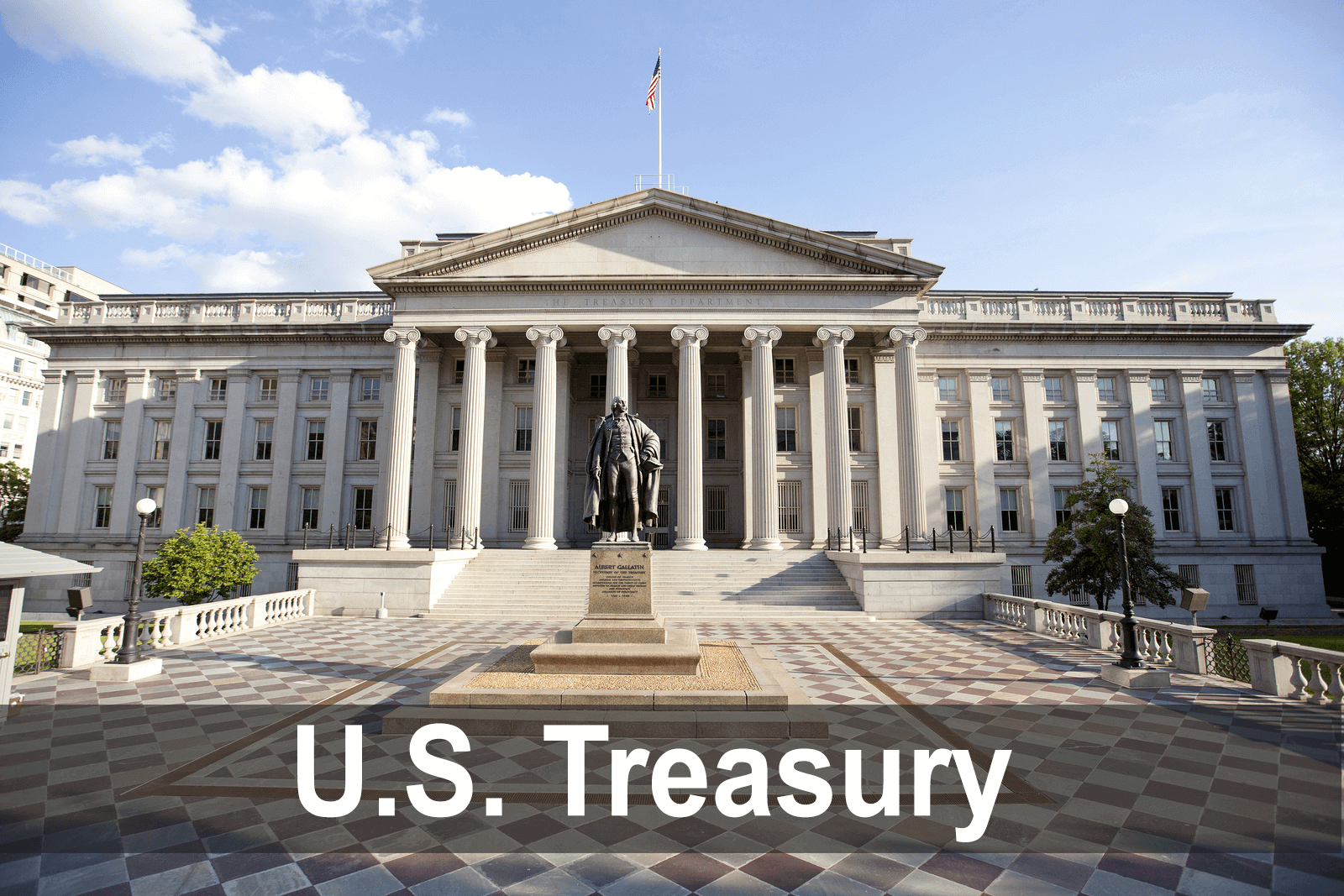Just like debt issued by companies or cities, the federal debt of the United States is bought and sold on freely trading markets known as the US Treasury markets. When investors go to buy debt, they don’t go buy it from Uncle Sam, and in fact, it may be many days or weeks before a newly created US Treasury Security even makes it into private hands.
The Lifecycle of US Treasury Securities
On behalf of the government of the United States, the US Treasury issues what are known as Treasury Bonds or Bills to the marketplace of preferred banks known as the “primary dealers.” To become a primary dealer, a bank must be a large banking institution with a size and scope large enough to be one of the many member banks of the Federal Reserve System.
These member banks, or primary dealers, are required by law of the United States to buy US Treasuries at each Treasury auction. This means, that no matter how much debt is for sale at any given time, all of it must be absorbed by the primary dealers who participate in auction-style bidding for the Treasury debt.
Bids are placed on Treasuries based on the interest rate, with primary dealers bidding down the interest rates they’re willing to accept to buy a particular Treasury bond. After the firms submit their interest bids and their desired quantities, the US Treasury reviews the bids and accepts the lowest interest bids until all bonds and bills from that particular auction are sold. Typically, the Treasury auctions no more than $60 billion of debt per week; however, depending on the amount of debt maturing at that particular time, or the necessity to fund newly crafted Federal budgets, the Treasury may auction $100 billion in debt or more. Consider also that after having paid off old debts, the Treasury may auction off a new Treasury security to continue financing operations.

How Ordinary Investors Buy US Treasury Securities
While ordinary investors cannot purchase US Treasury Securities at the primary dealer auctions, individual investors do have ample opportunity to invest through a number of different retail investment vehicles. Traditionally, it is the case that the primary dealers, having already satisified their demands for government debt, find it attractive to create their own mutual funds, exchange-traded funds, or other investments for individual investors. Alternatively, primary dealers may choose to instead pass the debt onto the private markets where individual investors can bid among other smaller banks for access to US debt.
For most investors, purchasing US debt through the Treasury makets isn’t exactly a winning proposition. For one, US Treasury bills and bonds are issued in denominations of $10,000, thus requiring that investors put up a whopping $10,000 just to buy one Treasury bond. Well, given that most investors don’t save $10,000 per month, or maybe not even per year, amassing such investment capital isn’t only unmanageable, but also impractical.
As a result, one of the best ways to access the US Treasury market is to participate in one of the following investment products:
- Treasury Securities or Fixed-Income Investment – brokerage firms and investment management companies of all types offer plain-vanilla funds that invest in a myriad of different US Treasury securities to produce a long-term safe haven for investment capital.
- Mutual Funds – Mutual funds based on US Treasury Securities are another popular investment as the investor can choose to automate their savings (apply a certain amount to the fund per month) as part of a routine retirement savings plan.
- Exchange-Traded Funds – Due to a groundswell of new exchange-traded funds, investors wishing to access the US Treasury markets can buy into a number of funds that offer different exposure to different maturity dates. A short-term fund, for example, would buy into US Treasury Securities with a maturity date of 1-5 years, while mid-range funds seek 5-10 year bonds, and long-term funds may buy anywhere from 10-20 years, or even occasionally purchase the 30-year “long bond.”
- Money Market Funds – The most liquid of the four investments, money market funds achieve returns that are in-line with short-term US Treasury products. Generally, investment managers purchase US Treasuries with maturities of less than one year, and pass on the benefit to investors of being able to access their money at any time. Take into consideration that having access to your funds immediately does come at a cost, as money market funds usually provide returns substantially lower than other Treasury products.
All told, US Treasury Securities are highly-liquid, safe, investment vehicles that provide an average rate of return of 5-6% per year, depending on current economic conditions and US debt loads. As a historical guideline, expect to earn lower yields during economic downturns (when investors appreciate better the safety of US Treasuries) and higher yields during economic booms (when investors prefer investments with higher risks, but higher returns.)

